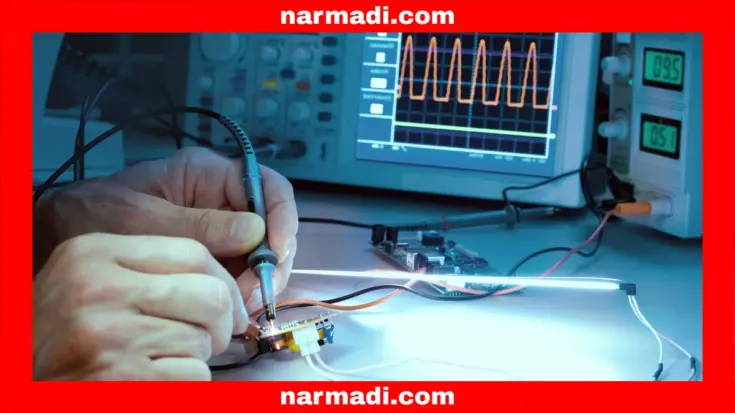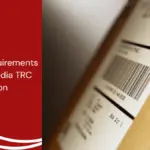GPS tracker uses communication technologies such as network cellular (2G, 3G. 4G, and 5G) or WiFi that operate within a specific frequency spectrum. This technology must meet the main requirements through a standard testing process to ensure its quality, security, and compliance with applicable regulations.
This standard GPS tracker testing process is stated in the Ministerial Decree of the Ministry of Communication and Digital No. 45 of 2025 for 2G and 3G network cellular, No. 352 of 2024 for 4G and 5G, and No. 12 of 2025 for WiFi which regulates various technical aspects, ranging from radio frequency, and transmit power, to testing methods.
Network cellular or WiFi technology, which is widely used in GPS tracker devices must comply with this standard to be used legally in Indonesia.
Also Read
Table of Contents
New Regulations on GPS Tracker Technology

This regulation covers radio frequency requirements, maximum transmit power, and testing for wild emissions (spurious emissions).
Ministerial Decree 45 of 2025
The following are the standard specifications for 2G network cellular:
| Band | Radio Frequency Band Range | Duplex Mode | |
| Uplink (MHz) | Downlink (MHz) | ||
| GSM 850 | 824-849 | 869-894 | FDD |
| P-GSM 900 | 890-915 | 935-960 | FDD |
| E-GSM 900 | 880-915 | 925-960 | FDD |
| R-GSM 900 | 876-915 | 921-960 | FDD |
| ER-GSM 900 | 873-915 | 918-960 | FDD |
| DCS 1800 | 1710-1785 | 1805-1880 | FDD |
The following are the standard specifications for 3G network cellular:
| Band | Frequency Band Range | |
| Uplink (MHz) | Downlink (MHz) | |
| I | 1920-1980 | 2110-2170 |
| VIII | 880-915 | 925-960 |
Ministerial Decree 352 of 2024
The following are the standard specifications for 4G network cellular:
| E-ULTRA Operating Band | Uplink | Downlink | Dupleks Mode |
| 1 | 1920 MHz – 1980 MHz | 2110 MHz – 2170 MHz | FDD |
| 3 | 1710 MHz – 1785 MHz | 1805 MHz – 1880 MHz | FDD |
| 5 | 824 HHz – 849 MHz | 869 MHz – 894 MHz | FDD |
| 8 | 880 MHz – 915 MHz | 985 MHz – 960 MHz | FDD |
| 28 | 703 MHz 748 MHz | 758 MHz – 803 MHz | FDD |
| 31 | 452,5 MHz – 457,5 MHz | 462,5 MHz – 467,5 MHz | FDD |
| 40 | 2300 MHz – 2400 MHz | TDD | |
The following are the standard specifications for 5G network cellular:
| Band | Frequency Band Range | |
| Uplink (MHz) | Downlink (MHz) | |
| n1 | 1920-1980 | 2110-2170 |
| n3 | 1710-1785 | 1805-1880 |
| n5 | 824-849 | 869-894 |
| n8 | 880-915 | 925-960 |
| n28 | 703-748 | 758-803 |
| n40 | 2300-2400 | |
Ministerial Decree 12 of 2025
The following are the standard specifications for WiFi:
| Operating Frequency Band | Usage Classification | Transmit Power | Band Width | Spurious Emissions |
| 2400 – 2483.5 | Access type 1 | ≤ 27 dBm EIRP (500 mWatt) | ≤ 40 MHz | ETSI EN 300 328 (min version 1.8.1) |
GPS Tracker Testing Standard

Ministerial Decree 45 of 2025
GPS tracker is carried out to ensure the device meets technical standards Ministerial Decree of the Ministry of Communication and Digital No. 45 of 2025. Here are some of the main points in the test:
| Parameter | Testing Method |
| Output Power | ETSI EN 301 511 clause 5.3.5; and/or ETSI TS 151 010-1 clause 13.3 |
| Output RF Spectrum | ETSI EN 301 511 clause 5.3.6; ETSI EN 301 511 clause 5.3.9; ETSI TS 151 010-1 clause 13.4; and/or ETSI TS 151 010-1 clause 13.9 |
| Conducted Spurious Emission | ETSI EN 301 511 clause 5.3.12; ETSI EN 301 511 clause 5.3.14; ETSI TS 151 010-1 clause 12.1.1; and/or ETSI TS 151 010-1 clause 12.3.1 |
| Frequency Error | ETSI EN 301 511 clause 5.3.1; and/or ETSI TS 151 010-1 clause 13.1 |
| Reference sensitivity level | ETSI EN 301 511 clause 5.3.42; ETSI EN 301 511 clause 5.3.46; ETSI TS 151 010-1 clause 14.2.1; and/or ETSI TS 151 010-1 clause 14.2.9 |
Ministerial Decree 352 of 2024
GPS tracker is carried out to ensure the device meets technical standards Ministerial Decree of the Ministry of Communication and Digital No. 352 of 2024. Here are some of the main points in the test:
- Electrical Safety: SNI IEC 60950-1:2016, SNI IEC 62368-1:2014, or IEC 62368-1; and/or other relevant IEC or SNI standards.
- EMC (Emission): SNI IEC CISPR 32:2015, IEC CISPR 32, or ETSI EN 301 489-50 according to ETSI EN 301 489-1
- EMC (Immunity): The Testing Method for immunity requirements is under the provisions in the SECOND Dictum of this Ministerial Decree.
Ministerial Decree 12 of 2025
GPS tracker testing is carried out to ensure the device meets technical standards Ministerial Decree of the Ministry of Communication and Digital No. 12 of 2025. Here are some of the main points in the test:
- Electrical Safety: SNI IEC 60950-1;2015 or the more recent, SNI IEC 62368-1;2013 or the more recent, IEC 60950-1; IEC 62368-1; and/or other relevant IEC or SNI standards.
- EMC (Emission): ETSI EN 301 489 and/or ETSI EN 301 489-17; IEC CISPR 32; and/or SNI CISPR 32: 2015 or the more recent.
- EMC (Immunity): The Testing Method for immunity requirements is under the provisions in the THIRD Dictum of this Ministerial Decree.
- RF Output Power, Channel Bandwidth, Power Spectral Density, Spurious Emissions, and Out-of-band Emissions: ETSI EN 302 567 (lowest version is 2.1.1)
GPS Tracker Type Approval and Certification Process in Indonesia

For GPS tracker devices to be used legally in Indonesia, certification from DJID is required. Here are the steps to get it:
Pre-testing the device
Before official testing, the device must be pre-tested first using measuring equipment such as a spectrum analyzer.
This helps ensure devices meet technical standards before being tested in authorized laboratories.
Testing at an official laboratory
After passing the pre-testing, the gadget will be sent to an assigned official research facility to experience testing according to the guidelines stipulated in the Ministerial Decree of the Ministry of Communication and Digital No. 45 of 2025, No. 352 of 2024, and No. 12 of 2025.
Issuance of certificates
After the device passes testing, an official certificate will be issued by DJID. This certificate is a requirement to market the device legally in Indonesia.
Tips to ensure standards compliance
- Learn the latest regulations: Make sure you understand every detail of the Ministerial Decree of the Ministry of Communication and Digital No. 45 of 2025, No. 352 of 2024, and No. 12 of 2025, including technical requirements and test methods.
- Perform pre-testing: Before official testing, perform pre-testing to ensure the device meets standards. If you don’t have a measuring instrument, use the DJID certification service which provides pre-testing services.
- Counsel a master: If this is your to begin with time looking for certification, consider utilizing the administrations of experienced DJID certification administrations. <UN>
















